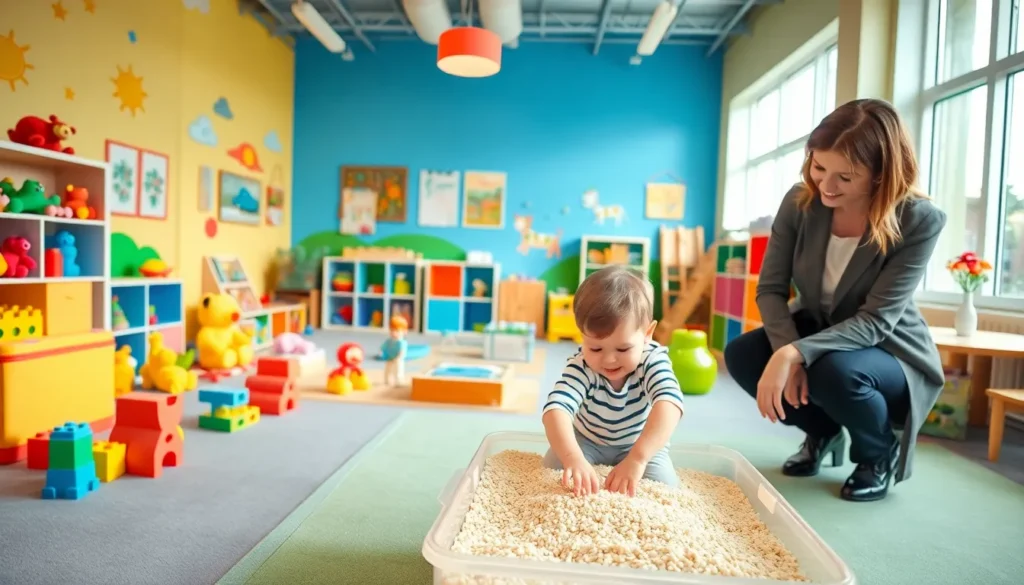Navigating the complexities of co-parenting can be challenging, especially when it comes to scheduling and communication. A co-parenting calendar serves as a vital tool for parents who share custody, helping them coordinate their children’s activities, appointments, and time with each parent. By centralizing all important dates and events, it fosters clarity and reduces misunderstandings.
With the right co-parenting calendar, parents can prioritize their children’s needs while maintaining a healthy relationship with each other. This structured approach not only simplifies logistics but also promotes consistency in children’s lives, making transitions smoother. Whether using a digital app or a traditional paper calendar, the benefits of staying organized are undeniable.
Table of Contents
ToggleWhat Is a Co-Parenting Calendar?
A co-parenting calendar serves as a centralized scheduling tool for parents sharing custody of their children. This calendar details key dates such as visitation schedules, school events, extracurricular activities, and medical appointments. By organizing these commitments, the calendar reduces misunderstandings between co-parents and prioritizes children’s needs.
Co-parenting calendars can take various forms, including digital applications, online shared calendars, or traditional paper versions. Each option offers unique features, such as reminders and notifications, that support effective communication and collaboration between parents. These tools ensure that both parents stay informed and engaged in their children’s lives.
Incorporating a co-parenting calendar significantly simplifies logistical planning. It allows parents to coordinate schedules seamlessly, minimizing conflicts and ensuring children benefit from consistent routines. Ultimately, a well-maintained co-parenting calendar enhances the co-parenting experience, fostering cooperation and stability in children’s lives.
Benefits of Using a Co-Parenting Calendar

Using a co-parenting calendar offers significant advantages for parents sharing custody. It enhances organization and supports the smooth management of children’s schedules.
Improved Communication
Improved communication occurs when both parents access the same calendar. Parents can see each other’s schedules in real-time, ensuring everyone stays informed about important events. They can add notes or updates, which encourages transparency. Digital calendars often feature direct messaging capabilities, simplifying discussions regarding changes or concerns. This collaborative approach fosters an environment of teamwork, reducing misunderstandings about responsibilities.
Reduced Conflicts
Reduced conflicts arise from clear visibility of schedules and commitments. A co-parenting calendar centralizes essential dates, minimizing confusion about visitation and events. When both parents align their schedules proactively, they can address potential overlaps or conflicts before they escalate. By providing equal access to information, the calendar creates a sense of accountability, making it less likely for disputes to occur. Establishing this structure encourages cooperation, leading to a more harmonious co-parenting experience.
Key Features of an Effective Co-Parenting Calendar
An effective co-parenting calendar includes essential features that enhance coordination and communication between parents. Two critical aspects to consider are shared access and customization options.
Shared Access
Shared access allows both parents to view and update the calendar in real time. This feature ensures consistency in scheduling, as both can input their own commitments, like school events or doctor’s appointments. By allowing simultaneous updates, shared access minimizes the risk of double-booking and miscommunication. Each parent gains the ability to see changes instantly, fostering transparency and reducing misunderstandings.
Customization Options
Customization options enable parents to tailor the calendar according to their specific needs. Parents can categorize events, such as education, health, and extracurricular activities, using color-coded labels for quick identification. Custom reminders can also be set for important dates, ensuring no commitments are overlooked. Additionally, the ability to add notes or comments provides context regarding events, enhancing clarity for both parents. Customization supports the unique dynamics of each family, helping to create a personalized and effective co-parenting tool.
Popular Co-Parenting Calendar Tools
Co-parenting calendars come in various formats to suit different preferences. These tools can streamline communication and scheduling between parents, ensuring a smooth co-parenting experience.
Digital Solutions
Digital co-parenting calendar solutions offer convenience and accessibility. Many apps provide features like shared access, real-time updates, and automatic reminders. Popular digital options include:
- Cozi Family Organizer: This app allows for color-coded calendars, shared tasks, and meal planning. Users appreciate its family-friendly interface and compatibility with multiple devices.
- OurFamilyWizard: Tailored for co-parents, this platform includes message boards, shared calendars, and expense tracking features to help manage finances related to children.
- FamCal: Focused on family collaboration, this app enables users to share events, notes, and tasks, ensuring everyone stays informed and involved.
These digital platforms promote accountability while catering to the specific needs of co-parenting families.
Printable Options
Printable co-parenting calendar options remain popular for those who prefer physical formats. Paper calendars can serve as tangible reminders, providing visibility of important dates. Common choices include:
- Monthly Planners: These planners allow parents to visualize the entire month, listing significant events and appointments for easy reference.
- Weekly Templates: Focused on weekly logistics, these templates help parents coordinate daily activities, ensuring smoother transitions between households.
- Custom Family Calendars: These can be personalized to include family photos and important milestones, making them more engaging for children.
Printable calendars maintain structure and ease of use, appealing to those who appreciate traditional scheduling methods.
Tips for Successfully Implementing a Co-Parenting Calendar
Implementing a co-parenting calendar effectively enhances communication and organization. The following strategies ensure that the calendar remains a useful tool for both parents.
Setting Up the Calendar
Determine the calendar format that works best for both parents, whether digital or paper. Choose a platform that allows shared access, so both can contribute and stay updated. Input essential dates like visitation schedules, school events, extracurricular activities, and medical appointments. Color-code events for quick identification and categorize them for clarity. Set reminders for significant dates to ensure neither parent misses important appointments. Regularly review and adjust as necessary to accommodate changes in schedules or new commitments.
Maintaining Consistency
Commit to regularly updating the calendar after any changes occur to avoid confusion. Establish a routine check-in, like a weekly review, to discuss upcoming events and ensure alignment. Encourage open communication about any calendar adjustments, fostering teamwork. Promote the habit of checking the calendar daily or weekly, as it helps each parent stay informed about the children’s schedules. Stay flexible and adapt the calendar as needed, recognizing that changes are a natural part of co-parenting.
A co-parenting calendar is an essential tool for parents navigating shared custody. By providing a centralized platform for scheduling and communication, it streamlines logistics and fosters cooperation. Parents can reduce conflicts and misunderstandings while prioritizing their children’s needs.
With options ranging from digital apps to traditional paper formats, there’s a solution for every family’s preference. Implementing a co-parenting calendar not only supports organization but also strengthens the relationship between co-parents. Ultimately, this approach contributes to a more stable and consistent environment for children, making transitions smoother and enhancing overall family dynamics.




